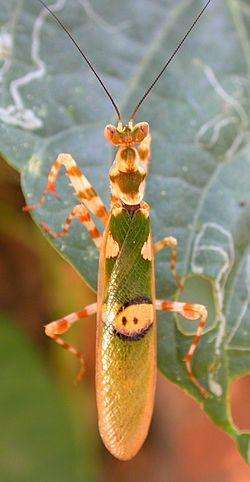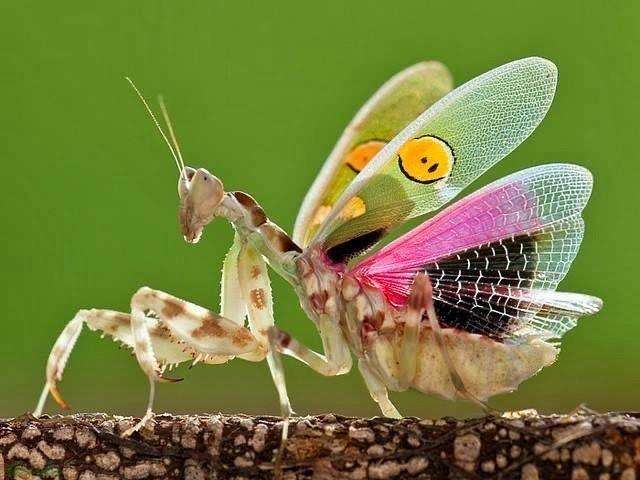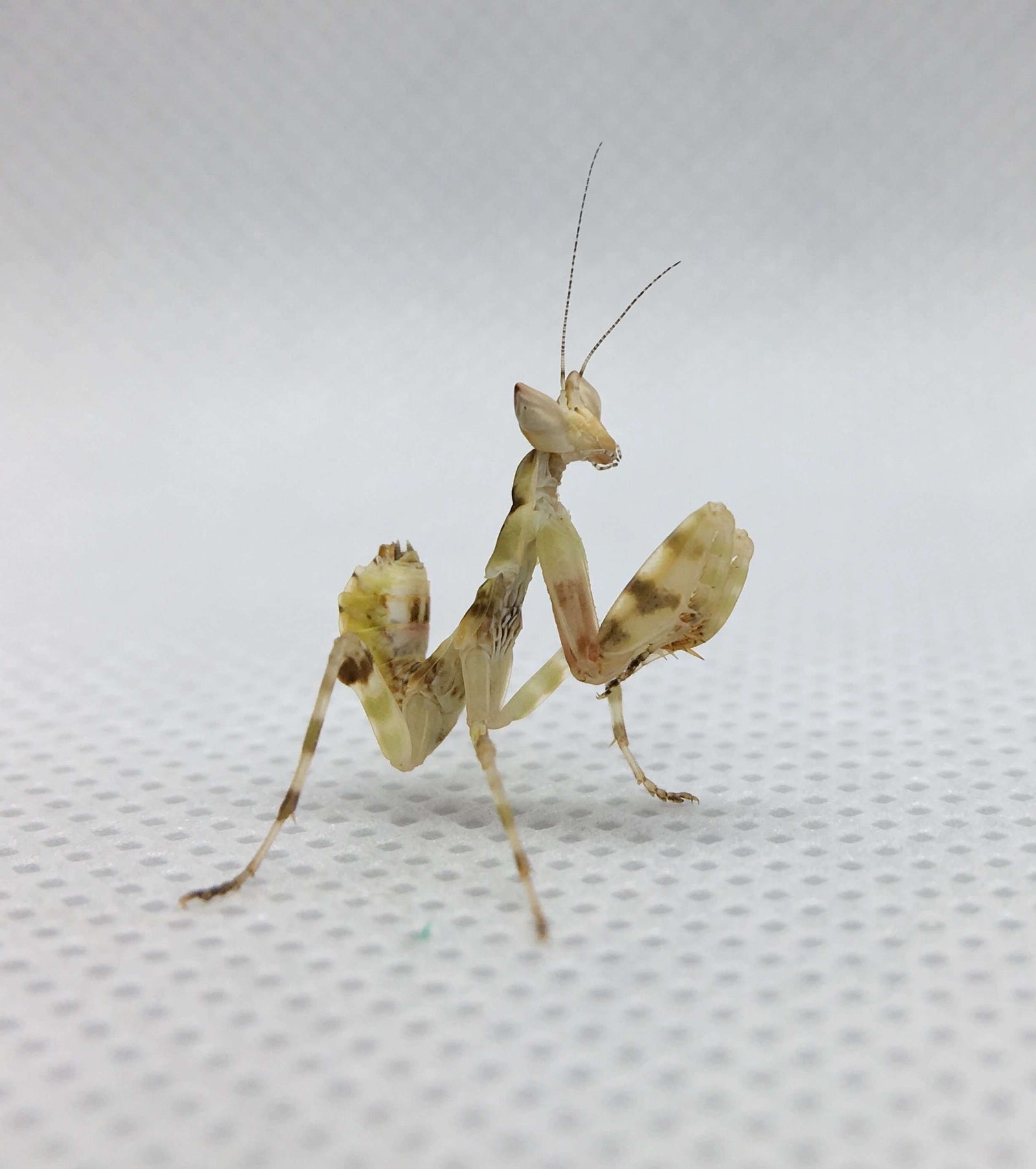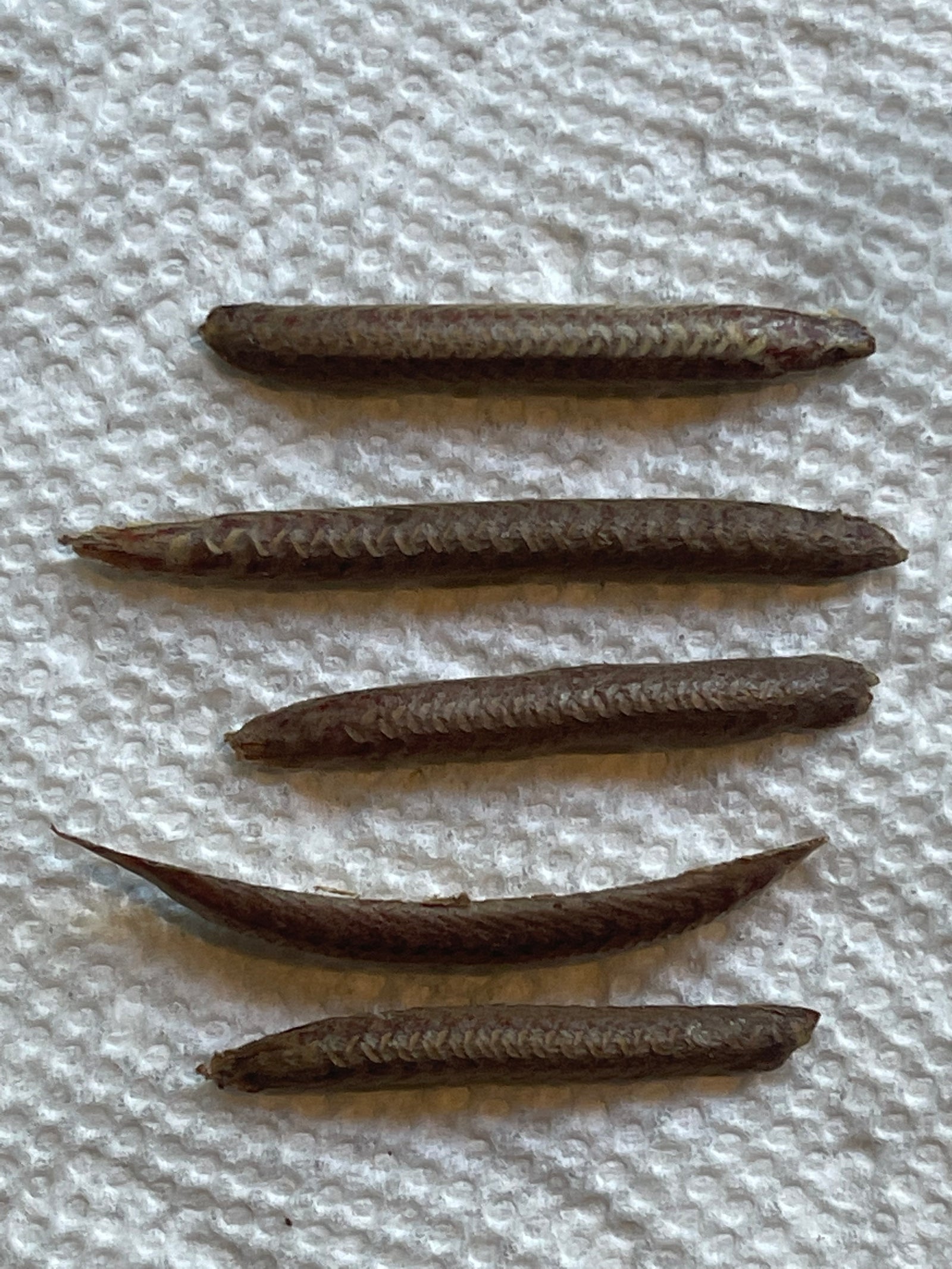



Creobroter gemmatus Asian flower mantis nymphs or ooths
$30.00 - $100.00
Asian Flower mantis.C. gemmatus
Males grow to about 1.5 inches (3.8 cm), and females are slightly larger. They prefer a humid environment and live about nine months in captivity. Females can be cannibalistic, but males are fairly communal. Though infrequent, cannibalism among C. gemmatus is more common than other flower mantises.
Depending on food and temperature, they molt eight times to become adults and can take between 2 and 5 months to mature. They are the smallest yet most widespread Creobroter species. With proper care, they make easy pets, and there is a 90% survival rate among nymphs.
An easy-to-keep flower mantis, which has a smiley-like decoration on its wings. When displaying the pink inner wings, they show off. Like the well-known, many body parts can vary between white, pink, and green.
General information
Scientific name: Creobroter gemmatus
- Common name: Asian flower mantis
- Distribution: Vietnam
- Max. size: Female ~4 cm, male ~3 cm
Keeping
Temperature: Day 22 - 28 °C, night room temperature
Relative humidity: Day 50 - 60 %, night 60 - 70 %
Recommended min. size of terrarium WxDxH: 15 x 15 x 20 cm
Aggressive species
Level of difficulty: Easy
Biology
Moults until fully grown: Female ~8 (adult in L9), male ~7 (adult in L8)
Sexually mature after the last molt: Male ~1 week, female ~2 weeks
Duration of development inside the ootheca: ~4 weeks
care sheet
Creobroter spp. ([Various] Flower Mantis)
Introduction:
Creobroter apicalis—Yunnan Flower Mantis
Creobroter elongates—Thai Flower mantis
Creobroter gemmatus—Jeweled Flower Mantis
Creoboter meleagris
Creobroter nebulosus—Chinese Flower Mantis
Creobroter pictipennis—Indian Flower Mantis
Creoboter urbanis
The Creobroter genus is extremely popular, with stock seeming to appear from nowhere magically. These very nice-looking flower mantises are very easy to care for, and their somewhat exotic look makes them a perfect beginner species. Don't let their size fool you; these are VICIOUS insects that will eat almost anything and thrive under almost any conditions
Scientific and common name
-
Physical description/appearance, i.e. size, color, shape, crypsis, etc.
-
Native range
-
Difficulty level: beginner, intermediate, advanced, or expert
Development:
At higher temps (above 80), adulthood can be accomplished in less than 3 months, but even at room temp, these reach adulthood in less than five months.
At L1, these nymphs resemble red ants and can be kept together for a good portion of the nymphal stage.(agent A)
Even when kept at room temperature, the first molt takes 10-14 days
-
Longevity
-
Molting observations
Behavior/temperament:
-
Degree of activity
-
Degree of aggression or timidity
-
Propensity to cannibalize
-
Dynamics of threat display
Captive Environment:
Any temperature between 70 and 90 is acceptable for this species, and humidity need not be higher than 50% or so, but they do appreciate frequent mistings when younger to help prevent mismolts. This is an aggressive species, and even if well fed, nymphs may still cannibalize; so L5 should be separated into smaller groups or individual housing.
L1 nymphs need plenty of room hiding spots and gentle daily misting
-
Temperature range and humidity levels
-
Type and size of enclosure(s) used.
-
Substrate or lack thereof
-
Cage furnishings, e.g., molting surfaces, perches, décor, plants, etc.
-
Communal housing if applicable
Feeding:
L1 nymphs of most Creobroter species (except gemmatus and urbanus) can handle hydei; the two smaller ones are better started on melanogaster.
Houseflies can be accepted at L3, and some individuals can eat bottleflies at L4; all will accept bottleflies at L5. Presub and older nymphs can eat roaches, bees, flies, moths, and spiders. Crickets can be used as long as they are properly cared for and the mantis is well hydrated since crickets seem to make creobroter constipated.
Feeding response
-
Type and size of prey used and/or refused for various instars
-
Quantity and frequency of feedings
Breeding:
Breeding is easy with this species, and they are extremely prolific. However, I have noticed that inbreeding can cause females to be more vicious and unwilling to mate. Unfortunately, since the genus Creobroter is so taxonomically messed up, the only way to ensure you are not hybridizing is to breed individuals from the same stock, which is why inbreeding occurs. Females molt seven times, males molt six times. Nymphs can be sexed as early as L4; in contrast to the smooth end of the male's abdomen, when viewed laterally, the ovipositors of females are brownish and bulge from the end of the abdomen. Males are ready to mate about 12 days after molting an adult; females take about the same time. Females should be very well-fed. When she is receptive, the bottom of her abdomen turns slightly yellow. Don't keep the adults in too close proximity before breeding; before adding the female, the male needs to be placed in a container first and allowed to calm down. Males have an issue with overeating as adults; they only need food once or twice a week, but if given the chance, they will gorge themselves to the point of being too fat to connect with the females. If all goes well, the male will notice the female and hop on her, connecting within minutes. These guys don't like being watched or disturbed; staying away from them during mating is advisable because they spook easily. Connection lasts 4-6 hours and is sufficient to fertilize the female.
-
Sexing/sexual dimorphism (explanation of physical differences and/or adult sizes of the sexes)
-
The time needed from the last molt to copulation
-
Tips: give us your methodology.
-
Tips for inducing copulation and fecundity
-
Tips for inducing females to lay oothecae
Oothecae:
Females will start laying within a week and can lay 6-12 ooths. Ooths can be kept like adults with slightly more frequent misting and will hatch 50-80 nymphs in 4-9 weeks.




